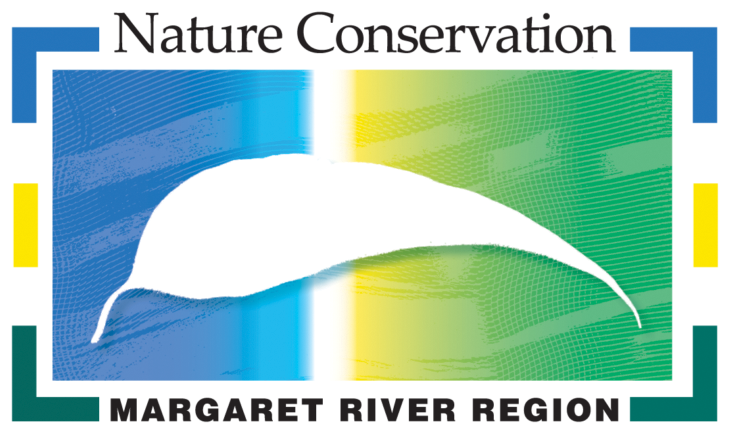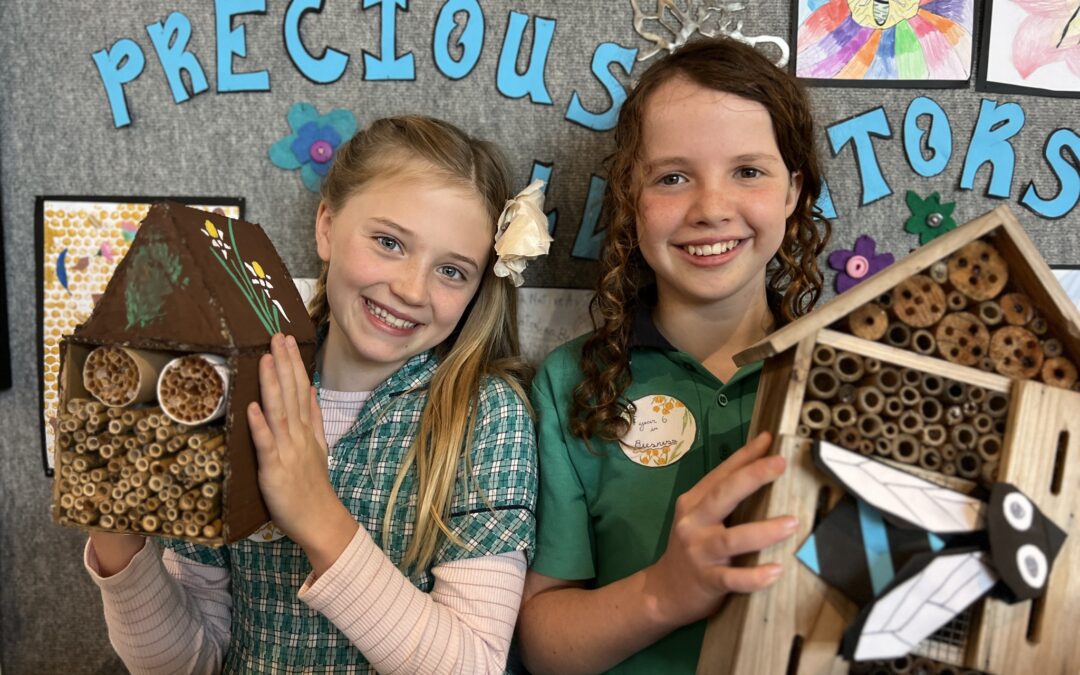The incredible and inspiring actions of local students to protect our environment were on show at the annual Our Patch project celebration at the Margaret River Heart today.
Run by Nature Conservation Margaret River Region, Our Patch is one of the Capes’ flagship youth education programs. This year, more than 200 Year 6 students from six schools wowed shire councillors, parents, teachers and the community with innovative projects to protect local catchments and wildlife.
Over the year, nine participating classes learned about their local catchments from scientists, landholders and cultural custodians before zeroing in on a unique environmental issue and devising creative solutions. The exciting nature-based learning culminated this week with student presentations at the Our Patch celebration, which also doubled as a science fair for kids.
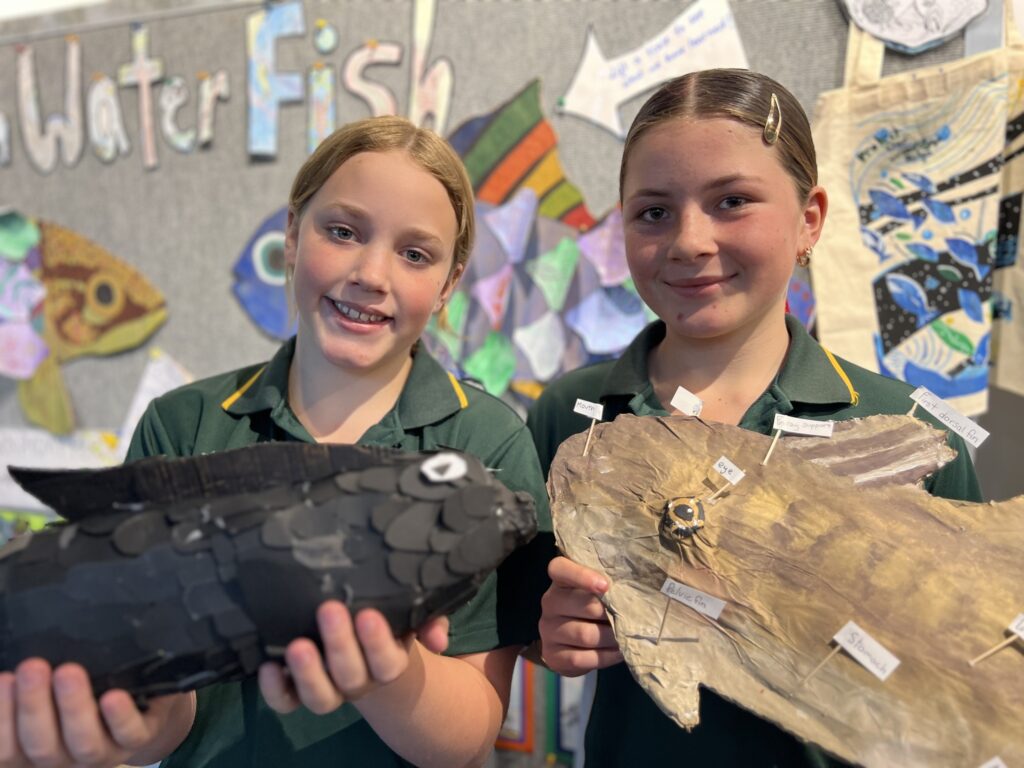
Praise for Our Patch and our inspiring students
Shire president Julia Jean-Rice praised the program as “outstanding” and said the day marked the culmination of 3560 student hours of environmental education, much of it on country. “Hands-on environmental education at its best. To our students, we are so proud of you – you’ve shown incredible curiosity and care towards our local environment,” she said.
Local MP Bevan Eatts also attended, calling the event “absolutely impressive.” “It’s just a great initiative, having six schools come together and raise real issues to do with the environment and conservation. Everyone involved should be extremely proud,” Mr Eatts said.
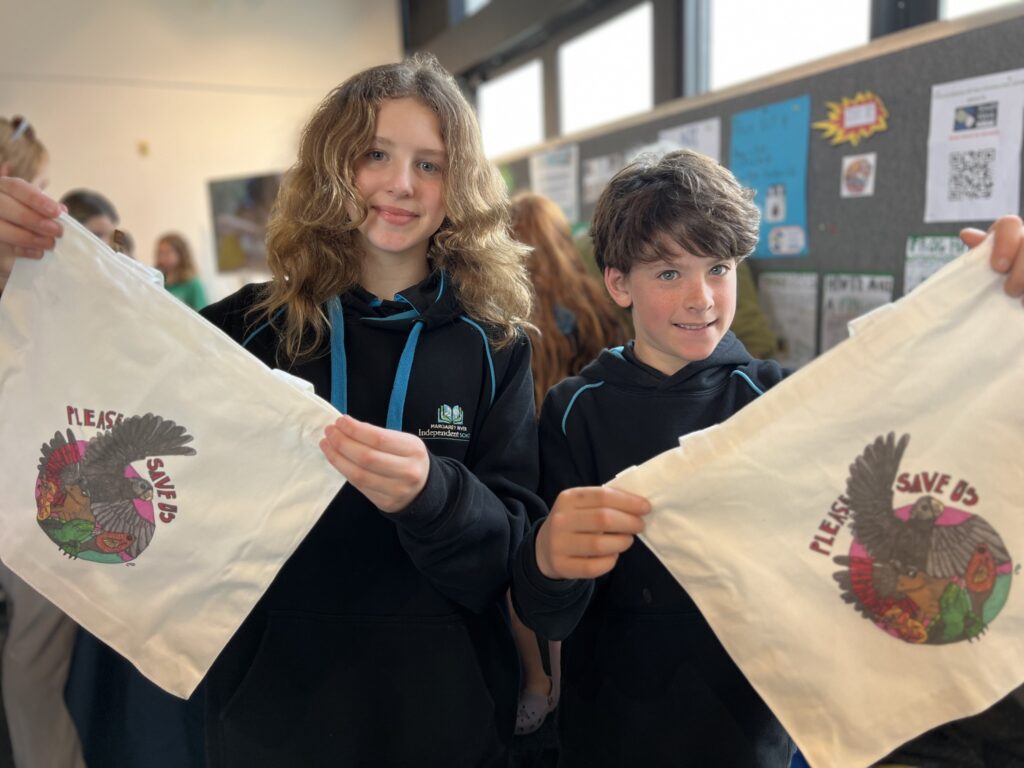
Projects to make a real difference to our special nature
School projects included:
- Margaret River Primary School: Studied agricultural runoff and river health, planted trees to restore riparian zones, produced comics and info booklets, and created a student pledge to act. Their project focused on three river inhabitants – the Carters mussel, the snake-necked turtle and freshwater fish.
- Margaret River Independent School: Tested water quality, studied frog populations, refurbished the school’s frog bog, and raised funds for frog conservation with tote bags and bucket hats.
- St Thomas More Primary School: Investigated native fish and threats from introduced species, and produced a puppet-show film The Mystery of the Missing Mud Minnow.
- Margaret River Montessori School: Researched pollinators, highlighting threats to native bees. Students built bee hotels, planted bee-friendly species, and created a community bee haven.
- Rapids Landing Primary School: Learned why arum lilies are such a problem weed and then mapped the toxic invaders in Wooditjup National Park using Nature Conservation’s Fieldbook app.
- Augusta Primary School: Identified and mapped invasive weeds, produced a fun “secret agent” weed ID booklet, removed weeds and replanted with natives in local bushland
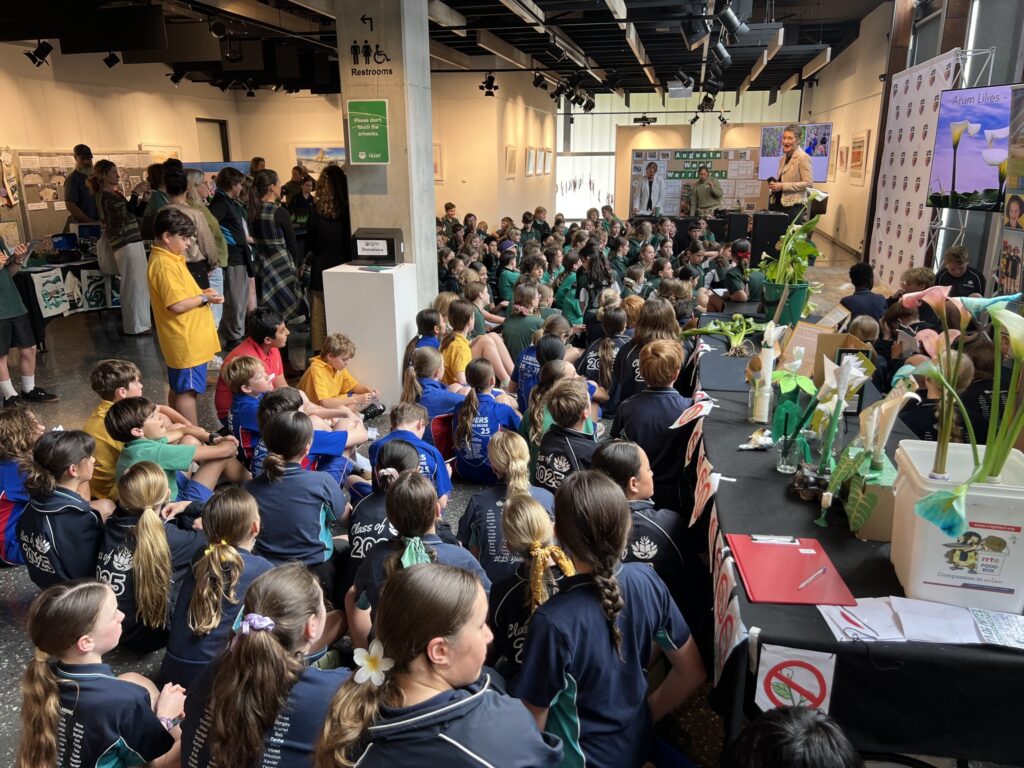
Parents were equally impressed. Margaret River mum Amy Oud said: “I was blown away, and so impressed. Wonderful to see the kids getting involved and learning in such an important way. It’s just fabulous.”
Our Patch coordinator Ellie Ward said the program’s strength came from the huge community effort behind it. “Our Patch is truly a community-wide environmental education program,” she said. “Our future is in great hands. You have all delivered the most amazing projects, and you should really feel proud.”
Meanwhile, Nature Conservation chair Ann Ward said Our Patch was unique because young people used science to learn about threats to our environment but then came up with and implemented real-life solutions. “These are our stewards of the future,” she said.
Student Willa Bradley, from Margaret River Montessori School, impressed the audience with facts about native bees. “It was great fun as well as a really good way to learn about the environment,” she said of this year’s Our Patch program.
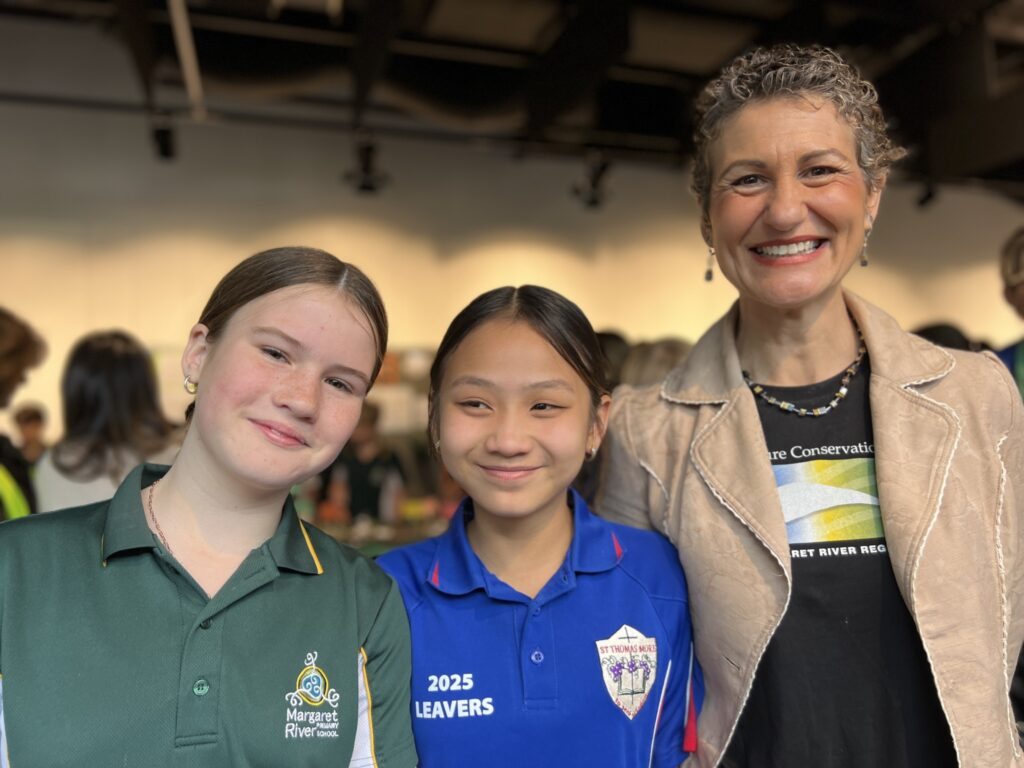
Big thanks to key program funders
The program is generously funded by the Paskeville Foundation, Shire of Augusta Margaret River, Lions Club of Cowaramup, Margaret River Rotary and participating schools.
Paskeville’s Foundation’s Jocelyn Evans said she found the showcase “so inspiring” and said helping to fund the Our Patch program was worth every penny. “Kids have that energy, that passion, you can’t ignore them,” she said. “They have the courage to see a problem and call it out, and this program really fosters that.”
Ms Ward thanked the teachers, parents, students, local businesses, scientists and volunteers who all contributed. “Days like today prove what’s possible when a whole community comes together around nature and education,” she said.
